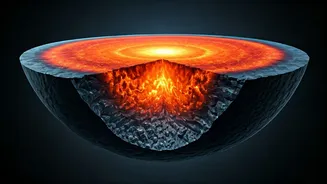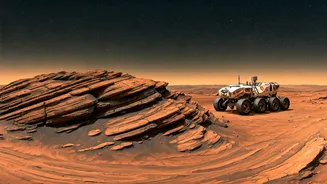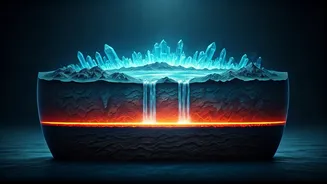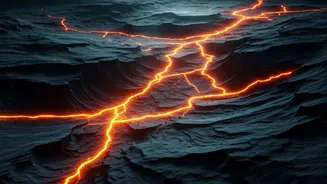Diving into the Depths
MIT's research has led to the identification of traces suggesting an ancient, 'proto-Earth' beneath the surface. This remarkable find challenges prevailing
theories about our planet's early formation, offering an alternative model. The proto-Earth theory proposes that the Earth went through a phase involving unique geological and chemical processes, ultimately influencing its current structure. This early Earth would have looked significantly different from what we know today. Scientists meticulously analyzed seismic data, seeking anomalies and patterns that could hint at the existence of a distinct, ancient layer. Their exploration revealed characteristics within the Earth's mantle that did not align with expected composition based on current models. It was those deviations which allowed the scientists to theorize about a proto-Earth.
Unveiling the Clues
The evidence for the proto-Earth lies in the analysis of seismic waves, which provided clues about the mantle's composition and structure. The researchers examined the behavior of these waves as they passed through different layers of the Earth. Unexpected variations in their speed and direction offered hints of an ancient material. The seismic data, combined with advanced geochemical modeling, provided critical information about the makeup of the Earth's interior. This modeling allowed researchers to compare their findings with known compositions and properties, enhancing the accuracy of their assessments. The presence of materials, different than those expected, in the deep mantle, suggested a primordial phase. This observation has led to the formulation of a new understanding of Earth's formation. Furthermore, the researchers have been trying to determine the relationship between this proto-Earth and modern-day geological processes, highlighting the significance of their findings.
Proto-Earth's Significance
The discovery has immense implications for understanding the planet's formation. It suggests that Earth’s early history was shaped by geological and chemical events. This theory also highlights previously unknown mechanisms. If validated, the concept of a proto-Earth could necessitate a reassessment of current understanding of the evolution of terrestrial planets. The proto-Earth model also opens new avenues for studying the formation of other rocky planets in our solar system and beyond. Additionally, the researchers are working on connecting these ancient processes to the development of the Earth's atmosphere, oceans, and even the onset of life. This research promotes the evolution of the Earth and its ability to harbor life. It provides insights into Earth’s long-term environmental processes.
Future Research Avenues
The research by MIT opens pathways for further exploration and research. Scientists intend to delve deeper to examine the exact composition of the proto-Earth's remnants. The objective is to further refine the proto-Earth model. These future studies will focus on obtaining more data about the deep mantle's structure. Scientists also plan to analyze rock samples and conduct more detailed simulations. These steps will validate their theories, thus, providing a clearer view of the early Earth. The collaboration between geophysicists, geochemists, and other scientists will play a crucial role. This collaborative effort is important for understanding the geological events which took place in the distant past. These findings also aim to improve the accuracy of models used to study the Earth’s mantle.










